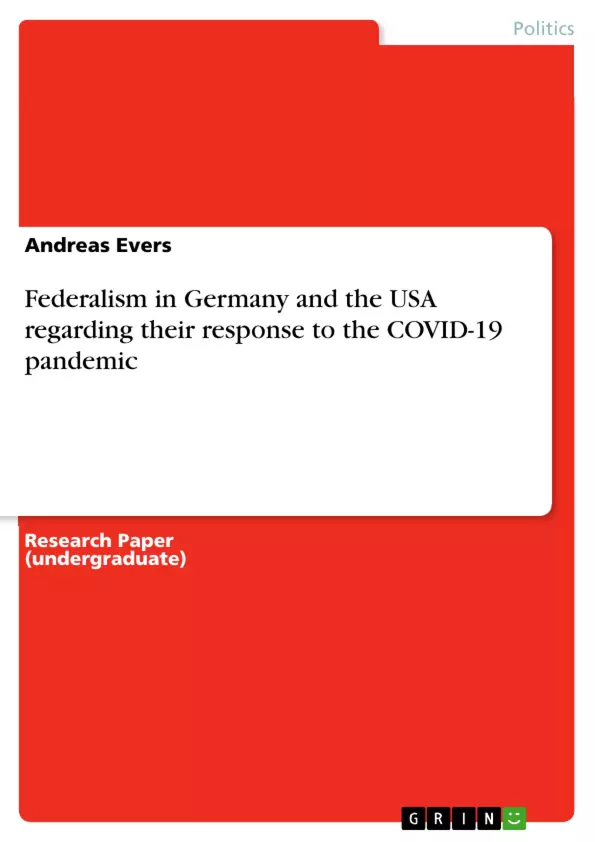What are the main differences between the federalist model of Germany and the dual federalism of the USA? How do the federalism designs in the US compared to Germany affect their ability to respond to the COVID-19 Pandemic? This paper is intended to show the status of the German federal states in the Federal Council model and the position of the American states in the Senate model. The author examines which role the member states play in the two very different concepts and shows how individual state interests can be perceived at the federal level.
Federalism is a widely used form of government. In addition to Germany and the United States, for example, Canada, Argentina and Nigeria are also federally organized. All states have in common to be territorially divided into individual member states. However, there are clear differences in the number, size and competencies of these states, in addition to the degree of federalism.
Inhaltsverzeichnis (Table of Contents)
- Frame of reference and grounds for comparison
- Theory
- The American federalism model
- The German federalism model
- Findings
- Conclusion
Zielsetzung und Themenschwerpunkte (Objectives and Key Themes)
This paper aims to compare the federal structures of the United States of America and the Federal Republic of Germany in terms of their responses to the COVID-19 pandemic. It examines the role of member states in both systems and investigates how their design affects their ability to address crises.
- Differences between the American and German federalist models
- Impact of federalism designs on pandemic response
- Influence of member states on federal policy
- Historical development of federalism in the USA and Germany
- Comparison of the Senate and Federal Council models
Zusammenfassung der Kapitel (Chapter Summaries)
- Frame of reference and grounds for comparison: This chapter introduces the concept of federalism and its variations across different countries, focusing on the differences between the United States and Germany. It highlights the significance of understanding these variations in the context of pandemic response.
- Theory: This chapter delves into the theoretical underpinnings of American and German federalism, outlining their historical roots and contrasting their approaches to the distribution of power between federal and state levels. It explores the concept of dual federalism in the US and the role of the Supreme Court in shaping intergovernmental relations.
- The American federalism model: This section examines the principles of American federalism, highlighting the strong sovereignty of individual states and the division of responsibilities between federal and state levels. It discusses the 10th Amendment and its implications for the distribution of power.
- The German federalism model: This section delves into the structure of German federalism, emphasizing the importance of the Federal Council (Bundesrat) as a representative body for the states in federal decision-making. It explores the constitutional safeguards for the continued existence of member states in both systems.
Schlüsselwörter (Keywords)
The primary keywords and focus topics of this work include federalism, comparative government, COVID-19 pandemic response, dual federalism, Senate, Federal Council, state sovereignty, intergovernmental relations, and constitutionalism. This research examines the impact of different federal structures on pandemic response, focusing on the roles of member states in shaping federal policy.
- Quote paper
- Andreas Evers (Author), 2020, Federalism in Germany and the USA regarding their response to the COVID-19 pandemic, Munich, GRIN Verlag, https://www.grin.com/document/584926



